The Importance of Community Interventions in Healthcare
Dr. Michael Ruscio is a DC, Naturopathic Practitioner, researcher, and clinician. He serves as an Adjunct Professor at the University of Bridgeport and has published numerous papers in scientific journals as well as the book Healthy Gut, Healthy You. He also founded the Ruscio Institute of Functional Health, where he helps patients with a wide range of GI conditions and serves as the Head of Research.How compassionate communities measurably improve health outcomes, with Dr. Julian Abel.
Social science has discussed the impact of social relationships on mortality for decades. But this concept only recently started to penetrate healthcare. Dr. Julian Abel discusses his U.K.-based study showing a significant drop in demand for emergency services from end-of-life patients, if they received an intervention of compassionate community. Another large study shows that connection increases longevity more than quitting smoking. In this episode, we consider broader implications and ways to cultivate community, both personally and as a practitioner.
Dr. R’s Fast Facts Summary
Why is community so important?
- Social relationships are fundamental to human health
- Evolutionary pressure created a need for social connectivity, just like it did for exercise and time in nature
- Community impacts a variety of pathways and functions in your body: inflammation, blood pressure, oxytocin, serotonin, etc…
- Compassion connects people
Supporting Research
- This study shows a 30% increase in non-treatment patients (no community) vs 15% decrease in ER admissions after community development intervention
Healthcare Communities
- Practitioners can assess social connectivity with patients
- Inquire about someone’s goals, their friends and family, community, etc.
- Much of socializing is centered around like interests
- Connect patients with resources, for example HealthConnectionsMendip.org
- 1-on-1 coaching is also an option
- Practitioners can help with building community among their patients
Social Communities
- Communities need well developed organizations that support people coming together consistently for a variety of interests
- This starts with a ground up approach
Resources
- Book: Mama’s Last Hug: Animal Emotions and What They Tell Us About Ourselves
- Book: The Village Effect: How Face-to-Face Contact Can Make Us Happier and Healthier
- Asset based community development John McKnight
- Research: Julianne Holt-Lunstad Paper
Where to learn more about Julian Abel
In This Episode
Episode Intro … 00:00:40
The Impact of Community Interventions … 00:01:44
New Study, & Why Community is Important … 00:07:21
How Do You Develop Community? … 00:17:38
How to Help with Patients’ Social Lives … 00:22:27
Healthcare Communities vs. Other Kinds … 00:28:55
How Can Doctors Tap Into Community? … 00:33:35
Building Networks Around Patients … 00:46:55
Case Studies: Healing Power of Community … 00:49:54
Episode Wrap-up … 00:55:35
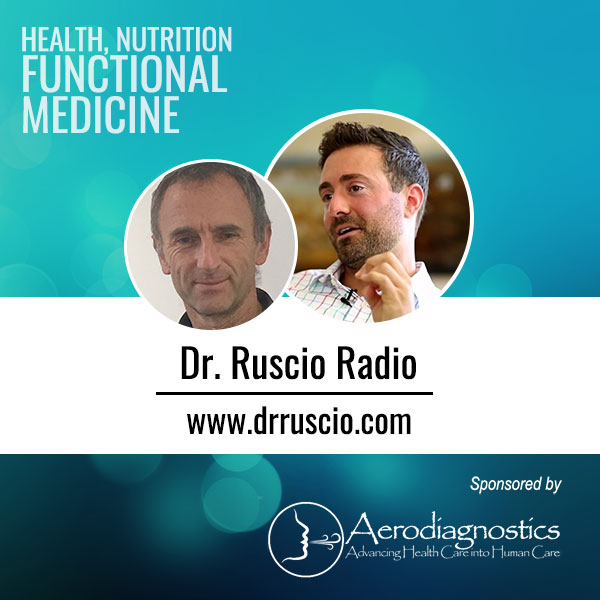
Download this Episode (right click link and ‘Save As’)
Episode Intro
Dr. Michael Ruscio, DC:Hi, everyone. Welcome to Dr. Ruscio Radio. This is Dr. Ruscio. Today, I’m here with Dr. Julian Abel, and we are going to be talking about the importance of compassion and community building, and how that may lead to a measurable decrease in the use of medicine in hospitals and the emergency room.
And Julian came to my attention after speaking with Tommy Woods, who I have a high amount of respect for. He highly recommended Julian. So Julian, welcome to the show and thanks for being here today.
Dr. Julian Abel: Well, thanks very much for inviting me on. Delighted to talk to you.
DrMR: Yeah, it’s a conversation that I think is always good to have and bring up repeatedly, because there does seem to be this natural inertia of our lifestyles to pull us into a bit more of an isolated way of living. Or at least, that’s how my life seems to be. So these reminders about how important community is can be quite vital. It’s definitely something that I’m curious to expand upon.
Before we jump in though, will you tell people a little bit about your background and how you got into this work?
The Impact of Community Interventions
DrJA: Okay. So I’m a recently retired palliative care physician. And for about the last decade, I got interested in what’s called public health approach to end-of-life care, of which a significant bit is compassionate communities. We developed a whole range of practice examples and research around the importance of compassionate communities at end-of-life, because death, dying, loss, and caregiving is going to happen to all of us. It’s everyone’s responsibility.
As part of that, I was implementing a program in Somerset, which is a county of 500 thousand people in the southwest of England. And I got directed towards Frome Medical Center. So I got in contact with them and discovered that they’d been running a similar kind of project in general practice for a two-year period. And the minute we got talking, we just realized that we were talking about the same thing.
So we simply joined forces because we had so much in common. It went on from there, really. The story goes on, which is quite amusing in a way. The way that the project was being funded in Frome was, it had to go through an annual cycle of applying for healthcare funding to be able to continue the project. And the lead GP there, Dr. Helen Kingston, thought maybe the commissioning body would respond if we wrote a paper about it.
So, she produced some figures about the impact on emergency admissions. And I thought I could get some better figures, which I subsequently did. We have excellent data sources in the UK, if you can actually get ahold of the figures. And when I got the figures back, I was absolutely astounded to see that the emergency admissions had fallen—as it turned out—by about 15% in Frome, while at the same time at Somerset, they’d gone up by more than 30%.
DrMR: 30% was the control, where no intervention was made?
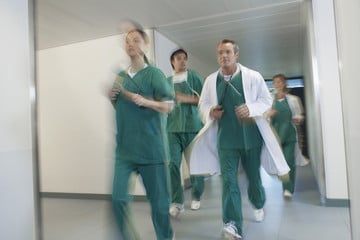
DrJA: That’s it. And it was astounding because of the work I’d done previously. I was aware of the ever-increasing number of emergency admissions and that there are no interventions that have reduced them, in spite of government policy in the UK being based on moving care out of the hospital into the community. In fact, in the UK in the last 12 years, emergency admissions have gone up by 42%. It’s an absolute tsunami of people being admitted to the hospital. And not because they need more or better medicine, as we showed. But essentially because of a loss of community.
So, we were absolutely astounded when we saw the results. The purpose of the project in the first place was to give people good treatment, good medical care. And of course, you can’t separate people from their environment. So part of that was thinking about the world in which we all live and seeing how we can connect all of that together.
DrMR: Yeah. And I think most people understand that the power of dietary interventions and lifestyle interventions are remarkable. And while yes, other “treatments”—probiotics, herbal treatments, various medications—can certainly be helpful, we get so much impact from these foundational dietary and lifestyle interventions. It’s no surprise to see that in the “untreated” here, when the treatment is community development, there was a 30% increase in ER admissions. And in the treated group, there was a 15% decrease. That’s a remarkable swing from one end to the other.
DrJA: The funny thing is, social science has been aware of the impact of social relationships on mortality for 30 or 40 years. And it’s not something that has been applied in medicine. But there’s a really good paper by Julianne Holt-Lunstad at Brigham Young University, which looked at the impact of social relationships on mortality, a meta-analysis of over 300 thousand people. She produced a very nice bar chart, which shows that social relationships are more effective at increasing length of life than giving up smoking, drinking, diet, exercise, or anything else that you care to mention. And it absolutely dwarfs the treatment of hypertension.
So what we figured out in Frome is using a program of compassionate communities to bring social relationships into the routine clinical practice. When you look at it from that perspective—social relationships are fundamental, in fact, not just to human health, but actually go back to primate and animal health—when you figure out how to apply that on a day-to-day basis, it’s no surprise it has such a profound impact.
New Study, & Why Community is Important
DrMR: And just for the audience, I want to make sure to underscore the paper that you published, which is entitled “Reducing emergency hospital admissions: a population health complex intervention of an enhanced model of primary care and compassionate communities.” And do you feel that one of the main items that was a strength of your paper was the fact that you had a control group and a treatment group? Is that what made this research novel?
DrJA: There are two things. The first thing is that we were really lucky that we had the figures for the rest of Somerset because we could make a direct comparison. And the expectation would be that you would have a similar kind of pattern to what we’re seeing in the rest of Somerset. So that was a big help.
But the second thing is that the size of the impact is so enormous. This is a similar kind of impact to when they first tried vitamin C on something like 10 people on a ship’s voyage. And eight of them died, but the two that had vitamin C didn’t. So, it’s kind of obvious. And because the difference was so enormous, it’s not marginal. Even in the context of if there’d only been minor increases in emergency admissions in Somerset, you would’ve still seen a significant decrease in Frome.
DrMR: Right. So, let’s go into the why. And this might be a complex question to answer, but as best you’re able, why does it appear that community development and having healthy community and social networks around one is so important?
DrJA: It’s a great question. I’ve just completed a book about the whole project, which hopefully gets published next year. It’s given me the opportunity to look into more detail. But when you look, you can find evidence of the impact of social relationships everywhere. For example, if you’re looking at hormonal health, then you can look at hormones such as oxytocin and dopamine. Oxytocin is a so-called socializing hormone, and has a physiological impact on lowering blood pressure, reducing stress, making you feel better. And when you look at the presence of oxytocin, you don’t just find it in primates, you find it in the whole animal kingdom. Even if you give oxytocin to plants, they grow better.
What this means is that the socializing nature of who we are is built in to hundreds of millions of years of evolution. This is not something that has happened by chance. It’s not just “kind of a nice thing.” And we know that you get the release of oxytocin, and the hormonal cascade that comes from that, for even things like light social contact. So if you’re out to the shops, and you just chat with somebody that you come across—maybe it’s the first time you met them, or you come across them a few times—even that, multiple light social contacts, definitely has a hormonal consequence.
And I know that you guys are interested in functional medicine. Actually you can look at the whole side of inflammation and fat-burning pathways, or stress and insulin resistance, and you have a kind of divergence, on the one hand, of health with a good lifestyle and good diet and dealing with stress, and on the other where you have high stress and high carbohydrate diet, high insulin levels, all of that kind of stuff. Again, when you look at the impact of what happens when you have social contact, whether it’s close social contact with family or friends or even light social contact, then actually you feel better, you become less stressed, and then that has all the consequences of less inflammation, lower blood pressure, etc.
You can also look at social behavior. What happens when you get a group of people together who work in a cooperative way and the impact that that has in really fundamental survival skills. It’s interesting that we have a somewhat twisted version of the evolutionary theory that Darwin first put forward (who talked about emotions and even wrote a book about it). But the phrase “survival of the fittest” was not something that he coined.
There is a sense that the way that it’s developed from a biological perspective that if you’re the biggest and the strongest, then you’re going to win and breed more, etc. It’s absolutely not the case. And in particular, grouping together social actions makes an enormous difference to survival. There’s quite a lot of interest in this now.
And for those who are listeners who might want to look more into this, there’s a book called Mama’s Last Hug, which looks at the compassionate nature and social relationships of primates. And there’s also another book—the name escapes me right now, I can’t put my hand on it—about the role of compassion in evolution. And then there’s a good book to look at by Susan Pinker called The Village Effect: How Face-to-Face Contact Can Make Us Happier and Healthier.
So, there’s increasing interest developing in this, and everywhere you choose to look you can find evidence of the impact of compassionate community social relationships on human health.
DrMR: And let’s say there is some sort of aptitude- or skill-based dominance hierarchy where in a hunter/gatherer society the best hunters may have had higher access to resources. It doesn’t mean that that hierarchy was exploited for personal gain. In fact, there seems to be a fair amount of evidence showing that those alphas or leaders, or however you want to term them, were only successful if they maintained equity amongst the tribe.
DrJA: Exactly. And when you drill down and see how that functions, it’s compassion that is at the heart of it.
It is the ability to recognize that other beings suffer in the way that we suffer. There’s a really simple aspect of it: “Okay, look, if other people suffer… I don’t like suffering, why should they? Why should they like suffering as well? Let’s do something about it.”
DrMR: And even if we wanted to look at the most selfish interpretation of that, as a hunter, let’s say you are the best hunter in the group. You’re still going to be more effective if you have other people working synergistically with you, rather than being a lone wolf out there trying to do it all on your own.
DrJA: That’s exactly right. You can think about it purely in terms of food, but if you think about all of the hormonal cascades that come from social relationships, these were equally applicable to our hunter/gatherers as they are to us now, and the health-giving consequences.

And like I say, you can look at it from behavioral terms, or you can look at it from effectiveness of hunting, or you can look from hormonal health, or you can look at it from biochemical health. But cooperative behavior makes a really significant difference in our well-being and our satisfaction with our life.
DrMR: Yep. And at least from what I understand, in early evolutionary record regarding hominid evolution, it does seem to some extent the hominid groups that were most cooperative were able to see the society advance most quickly and therefore win. Because if we can have this loose agreement that I’m going to focus on doing a few things and you’re going to focus on doing a few other things, then you have specialization of labor. Therefore skill acquisition and tool refinement becomes better when people are focusing on those things. Communication may improve. And then, of course, now you have a group of people who have higher developed communication and skill as a byproduct of that cooperation, who can come to dominate the other lesser evolved, skilled, or enhanced hominids.
DrJA: That’s right. And I think that’s that’s particularly the case when going through cyclical changes in climate with the ice age, etc. Apparently it’s particularly important when people are going through periods of drought, fasting, all of that stuff. So, it’s not just when things are good. It’s especially important when things aren’t good.
DrMR: That makes complete sense.
Sponsored Resources
Hey, everyone. I’d like to thank Aerodiagnostics, my favorite SIBO lab, for making this podcast possible.
Again, Aerodiagnostics is the SIBO lab I use in my clinic. They have impeccable organization, customer service, test quality, and support. Regarding support, if you’re not highly proficient in reading SIBO labs, Gary definitely offers the best clinical support I’ve ever come across. He goes over labs in detail and offers insight analysis and really goes above and beyond.
Aerodiagnostic offers cash pay and insurance billing options, and they do a terrific job at keeping costs low and billing easy. They offer accounts for clinicians and direct-to-consumer testing. Aerodiagnostics, again, is my go-to SIBO lab. Aerodiagnostics, check them out.
How Do You Develop Community?
And that’s maybe a good transition to: what does this look like? And I just want to paint the context around that question of—as you just alluded to—when times are tough, how much more important communities are. And times being tough could also be analogous to being sick, being ill, not feeling well.
So I understand it’s almost an ironic situation, where you’re saying, “Well, I don’t feel well. I don’t have time to socialize. I need to read on the internet. I need to figure out what’s wrong with me.” Yes, we should invest some time in those endeavors, but we want to be careful, as I’ve said many times before on the podcast, not to lose your social life in pursuit of becoming healthier. Because that will be counterproductive to your health. So what does this look like, in terms of developing communities?
DrJA: Okay. So, there are two aspects that we broadly can be divided into. The first is what happens from a healthcare perspective. From a healthcare perspective, when you’re thinking about people coming to see a primary care physician (or actually any kind of physician) obviously you need to make a diagnosis and give the correct treatment. That’s kind of a no-brainer. But actually, what we’re saying is if you want to practice the best medicine, you have to practice clinical skills in the compassionate communities.
So, you have to make some kind of assessment about somebody’s social connectedness. And that might be with their family, their friends, and neighbors, or it might be they’re socially connected with the huge resource of stuff that goes on in every community. We’ll come on to that in a minute.
Then having identified that somebody has got more than just a medical problem—which in a way we all have—then it’s about, “Okay, I can directly connect them to community resources…” And we’ve got a web directory of services, for those of you that are interested, you can look this up, the website is called Health Connections Mendip. And it’s got a directory of services, and it’s all the huge resources going on in the community. It’s very usable, very easy to find. And you can find the references to this in the paper.
But then you may need people who need one-to-one work, and that’s based around goal-setting. That’s based around “what matters to me.” If for example, you’re an 80 year-old diabetic, but you’re suicidal with loneliness, then actually you’d rather your diabetes carried you off. You don’t care what’s happening with your HbA1c. But if you’re connected to a community choir, for example, and somebody helps you get down to the choir, then you start to build that social connectedness, and you’ve got a reason to live. So, the “what matters to me” is a really key bit. What are your major issues around your life, not just about your medical care?

DrMR: You mentioned an assessment. Is there some type of research-verified questionnaire that a clinician can look up and start issuing to their patients to get a fairly good read on what a patient’s connectivity looks like?
DrJA: No… it’s a great question. And I think it’s important to point out we’re right at the very beginning of this whole project because the paper actually was published about a year ago. We first came across the results in 2016. And there’s so much that is new and there are so many unanswered questions. And we’ve started to run projects in other areas when we’re spreading it in the area where we started. And we’re applying for a Research for Patient Benefit program grant, which will be a large prospective multi-center study. Because it’s all very well looking retrospectively and the results are truly convincing. Let’s do it prospectively.
And they’re population-based interventions. So you’re absolutely right. I’ve written papers on circles of care, which describes how these naturally occurring networks function. And in the context of end-of-life, there’s a good research literature—particularly coming out of the University of Western Sydney—about how you map social relationships and how they build at end-of-life, and how important they are.
I think it’d be true to say we’re kind of at the beginning of all of this.
How to Help with Patients’ Social Lives
DrMR: Maybe one just one opinion question then, if there’s not a research answer to this. Do you feel that just asking someone this question directly, perhaps loosely termed, “Do you feel like you have adequate social time or adequate social connectivity in your life?” Do you feel that would be a fairly accurate way of gauging this?
DrJA: I think it’s more of a gentle exploration. And it’s about asking the question about “what matters to you.” “What is it you want to achieve?” We call it patient-centered goal-setting. “What would you like to be able to do?” Because in a way, people may recognize that they’re lonely and just “I just want to talk to people.” So we’ve set up talking cafes in Frome where people could just go and chat, but they may not. But if you say, “Oh, yeah. There’s a Men’s Shed running,” they go, “Oh, actually I’d like to go along to the Men’s Shed.” And then the love, laughter, and friendship happens along the way.
The important bit is the bit that happens along the way, rather than the activity in which you’re engaged.
DrMR: So, it’s the pursuit of some type of goal that usually pushes someone into situations where they will have more opportunities to socialize.
DrJA: That’s it, exactly. Because just to give an example, people might go to the doctor and say, “I’m lonely.” And they say, “Well, you need to get out more.” Well, it’s not a terribly helpful statement.
But if somebody says, “I’m lonely,” and you go, “Well, what are you interested in? What do you like doing?” then, if somebody says, “Well, I’m interested in, I don’t know, model trains,” if you’ve got the resources at your fingertips, you can say, “Well, it’s funny you should say that, because I can direct you towards the model train group in Mendip.”
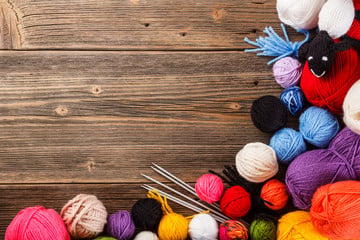
Or if somebody says, “Actually, I enjoy knitting,” “Well, okay, there’s a knitting group you can go to and make friends there.” Or choirs or walking groups, on and on and on, just the things that people do.
The key is not to say to people, “You should be doing such-and-such,” but to figure out what it is they like doing.
DrMR: Yeah, it’s funny you say that. I’ve said before on the podcast that, in my observation, it seems that much of friendship, relationship, social connections, are based upon some common utilitarian aim. So if you want to look at this through the lens of youth where it’s easier to see, if you’re wanting to become a better soccer player, you’ll be playing soccer and you’ll make many friends who are sharing that same utilitarian end of wanting to play soccer.
And then if you look at guys and gals in their 20s, they want to find a partner, so they’ll go out together and have a lot of friends that they’re doing that with. Or, you’ll have people who want to learn jiu-jitsu and so they’ll have their jiu-jitsu buddies. Or music, they’ll have their music friends.
So I think that’s actually brilliant, where you’re not trying to find friends just for the end of finding friends, but you’re finding something that you want to do with your life and then you find friends along the way. I think that’s absolutely brilliant.
DrJA: And then when you come across people who say, “Well, I wish I could get together with other people who are going through a similar kind of thing,” and there aren’t any groups, part of the community development side of things is about how you support communities to build those resources.
So, for example, one of the things that we’ve done quite a lot of is peer support grieving networks. You set up a bereavement café and people can just turn up. And the best people to support people going through bereavement are other people who’ve been through it. It might be a Parkinson’s group or a chronic lung disease group or could be absolutely anything. It doesn’t matter–
DrMR: Question there? Sorry to cut in, but I want to make sure to pose this before it slips through my mind. Do you have any sense if there’s any benefit to engaging in a non-health related group? The one question that rears in my mind is, if there’s a bunch of people sitting around venting and looking for support with a certain health ailment, that might, in a way, skew someone’s identity to be a little bit more sickness-centered. Perhaps might it be better if someone’s part of a group where they’re getting that social connectivity around, let’s say, learning a new instrument?
I’m not trying to paint it as an either/or, but do you feel that one of those may have more utility than the other?
DrJA: I think it’s entirely dependent on the individual, and it’s what interests them. And sometimes people might go and join an art class, for example. Or choirs are a classic example, because singing with people works really well. But then sometimes people go through difficult experiences in relation to their health. Or in particular, one of the main focuses is about caring for somebody who’s got long-term health problems.
And there’s a whole host of experiences, when they talk to other people who are going through a similar thing, a real deep human connection that comes from that. And that can be incredibly powerful. So I think it’s good not to prejudge what you think might be better for someone, but to really find out what interests them and what they would like to do.
And then it’s not the activity, it’s the love, laughter and friendship that’s along the way. It’s interesting when you hear sports people reflect—even if they’ve had a great career at being a professional sportsman—what they talk about afterwards is not so much their personal triumphs, but all the people they met, the friends that they made. You can see people value that really strongly. It wasn’t the fact that they won the gold medal. That’s nice, but they traveled the world, they met all kinds of different people and got along with them. There’s a recognition of the importance of social connectedness.
Healthcare Communities vs. Other Kinds
DrMR: And are you making a distinction between healthcare communities and, more broadly, just non-healthcare-centered social communities? I think that’s where you’re going next and I kind of cut off your train of thought there. So how do these two connect or differ from one another?
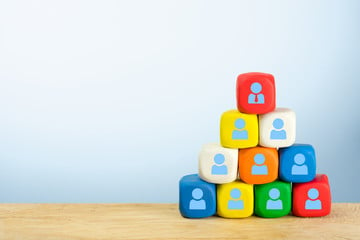
DrJA: Okay, so that’s a great point. On the one hand, the first bit we talked about is what happens inside the GP practice. The other bit of this is about community development. That’s about finding out what’s going on in the community. And the community development aspect of it is, in a way, much bigger than the healthcare aspect of it, because it’s the stuff of human beings. When they come together, it’s what happens.
A great place to find out about this is Asset-Based Community Development. In fact, that’s something that’s come out of the U.S. and John McKnight in Chicago has been a great, great leader of that. But essentially what we’re saying is, when you leave people to get on with it, we are all full of all kinds of creativity and imagination. And when we gather and do stuff together, then you get remarkable outcomes.
And that might be on a very simple social level, it might be for doing things on a much more community-based way of problem-solving, or it could be absolutely anything. But when human beings gather together, they communicate with each other, and all kinds of different activities take place. And there’s a whole wide variety of these different activities. So if you can help stimulate that process and link into it from a healthcare perspective, you’re not saying that you have to do a healthcare-related activity, because it’s social connectedness that makes a difference.
But what you have to do is find out what interests people. So you have to do both arms of the project. We know that you have to implement the full model. You can’t just pick and choose little bits, because it won’t work. And the two aspects are what goes on in primary care and the community development side of things, building compassionate communities. Both of them together and linking them up is the kind of essence of it.
DrMR: Just to make sure that I’m clear on what those two arms are, you’re looking at the doctor, making sure that he’s tuned into the person. Do they have goals? Are they pursuing those goals? And if not, there are certain healthcare-related resources that can get people the social connectivity that they need, ostensibly, around various health issues. And there also may be the option of one-on-one coaching, and that’s kind of our healthcare community. And then in tandem with that, we want to be developing things just more broadly in a given community of people that fosters easier socializing. Am I capturing that correctly? Am I missing something?
DrJA: I think you’re right. You’ve got a variety of these projects in the U.S. I was contacted by the Blue Zones in Los Angeles. They’ve got the Los Angeles beach communities… can’t remember the title exactly. But they’ve got a history going back to 1955 of a really sophisticated community development program, what Cormac Russell and John McKnight call “the associational life.” How we gather together in strength and communities about what our connectedness is. And their program is fantastic. But what they’ve not had is a healthcare buy-in. And because everyone passes through healthcare, it’s a great sorting ground of how you pick up all of this stuff.
So, you might have, for example, a lonely isolated teenager who’s being bullied at school. And that bullying goes on outside of the school with social media and they don’t get any respite from it. And the problems that happen as a consequence of this can be really severe. Mental health problems, suicide, risk-taking behavior, low education achievement, teenage pregnancy, drug and alcohol abuse, etc.
But if you can deal with that from a community perspective—by building strong communities, making people feel valued, making sure that they’re integrated, or if you’re setting up a compassionate community program inside a school—that absolutely has profound consequences.
How Can Doctors Tap Into Community?
If somebody’s come into contact with a professional because they’re running into trouble, what we’re saying is that that assessment of their social relationships—in the context of compassionate communities—is fundamental to health. And if we don’t do it, we’re not practicing the best medicine, which means that we have to make use of community resources.

DrMR: And how do you recommend that we do that? Because that actually seems to me like the larger challenge, because now you need the buy-in from people outside of the healthcare system. I could see it being much easier… let’s say you were diagnosed with type 2 diabetes, and you’re going to be changing your diet, lifestyle, and perhaps using a drug regimen of some sort, especially if you’re plugged into a major hospital system. And so you need the support, you need to talk with people about how they’re doing, how they’re implementing these things. They can learn from each other. They have that same goal of type 2 diabetes treatment.
It would seem more difficult in the community at large. You take a given town, you have swaths of different people with different interests in different locations doing different things. How do we start to unite them into a community?
DrJA: So I think that one of the things I’ve found is that healthcare professionals, generally, don’t have community development skills. But if you set up a so-called community development service which aims to map and stimulate, you have to invest relatively small amounts of money in this. But actually, that “how,” the process of community development is well-established and highly successful.
For example, knife crime in Glasgow was a terrible problem for young men. And they took a public health community development approach based on what had gone on in Cincinnati and again in either Los Angeles or Chicago, I can’t remember. But you start involving mothers. You start looking at what’s going on in the community and you start making people feel like they’re valued and have a place and a role. And actually community development is tremendously successful.
So, it’s just about bringing those things together. It’s about saying how we care for each other as human beings. And in fact, even in the context that you described—people are interested in improving their health, they got type 2 diabetes, for example—quite often they’re not interested in improving their health because their lives feel meaningless. It’s even been part of the narrative of development in the UK, looking at how you help people feel motivated to look after their health in the first place. They have something called Patient Activation Measure. The theory is that if you can help people find a reason to live, they’ll start to look after their health.
But if they haven’t got a reason to live, they don’t care what happens with their diabetes and they won’t bother changing their diet and they won’t exercise, etc.
DrMR: Fair point. So how do we start this process? It’s great to hear that there’s a process that’s already been developed and that one can employ. What does that look like? Let’s say there’s a doctor listening to this, saying, “I want to start doing this.” Where do they start?
DrJA: We’ve developed a program of how you do it. And that’s how our spread is happening. We worked out the finances of all of this and we worked out that it’s just purely on saving money from emergency admissions to hospital. For every 10 pounds that you invest per head of population, you get 60 pounds return. So, that’s maybe roughly 15 dollars and you might get 90 dollars in return.
We know that partial implementation of the model doesn’t work. We know that you have to have full implementation. And we know that you have to have something that goes on inside GP surgeries. We run a mentorship program and we help people put together the bids and do all of that. And then at the same time, you have to invest in the community development program as well. And you have people who will work one-to-one, who are not health professionals, but are trained in motivational interviewing. And those people will do community development at the same time as well.
And when you bring all of those things together and you implement the model in a systematic way, that’s where you get sufficient population health improvements that make the investment worthwhile.
DrMR: This sounds like you have to be plugged in with a fairly large hospital system. Is that kind of the level that this is at? Is there a more grassroots way to be able to implement this, or are we looking at more of a top-down, governmental, large agency? At least right now, is that where you have to be to get this ball rolling?
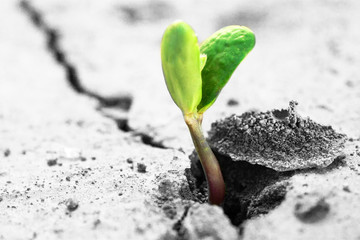
DrJA: You know, that’s a great question. We have seven key principles, and one of them is that this is a ground-up movement. You can start anywhere. And starting small scale, to be honest, you can start by asking your friend how they are—if they’re going through a difficult time—and what can you do to help them. And take them out for a drink and be nice to them or whatever it is.
You can start from wherever you are. It’s how we treat each other as human beings. You can start on a small scale, as happened in Frome. And as it turned out, it started on a small scale in the health center. And you just need key and committed people and you build and grow and engage more and more people.
And we know that top-down doesn’t work. The implementation methodology, from the community perspective, is participatory community development. It goes beyond co-production and says, “Actually, the people who can best define the problems and come up with a solution are the people themselves.” So trying to implement a top-down solution, inevitably, has unintended consequences.
From the context of the healthcare’s perspective, we use the Institute of Healthcare Improvement, quality improvement methodology, which again, is a participatory ground-up methodology. The only people who understand working practices are the people who do the work themselves. And if you want to get system-wide changes, you have to build safe, reliable systems. You start with developing theories and doing small-scale testing and actually working out how you make the whole complex picture fit together, so that you can start to expand it and help it grow outwards. So it is absolutely a ground-up movement.
DrMR: Okay. I’m a little lost on one of the details here. Some of how you describe this sounds like you can just start making these basic changes in your life… sure, full agreement there. Then when you mention having a bid and having a program and dollars invested and return, that makes me think there’s another aspect of this that’s more pre-planned, requires a fair amount of investment, requires a fairly large practice or hospital system to plug it into.
So can you give people a really direct answer, in terms of, let’s say there’s a doctor listening to this, as there are many, and they want to get started with this. But they’re not sure if you’re saying you have to be a hospital system, or if you can spend 100 dollars and have this program in a box. What does this look like literally in terms of implementation? Because I’m still a bit fuzzy on this. And if I’m fuzzy, people listening are fuzzy and I want them to be able to take action.
DrJA: Okay. It’s a great point. So I think if you’re a doctor and you’re interested, then it’s about figuring out what goes on in your community. And who the community leaders are. And is there a place where the information is gathered? And that you can just do that within your surgery. You can think about who are the people that come into your surgery. So, for example, I live in a small area in the far southwest of England. It’s relatively remote, so kind of a small peninsula that’s got one GP surgery. And when you go into the surgery, when you go into the waiting room, people are just talking to each other.
DrMR: And when you say surgery–?
DrJA: GP.
DrMR: Okay, so you’re not talking about literal surgery, as we’d say. Just a general practitioner visit.
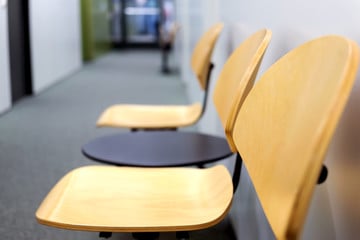
DrJA: No, sorry. A general practitioner visit. So people in the waiting room—because it’s a small community—all know each other. It’s a place where people can meet and gather and chat. So then you can think about, “Could I make the waiting rooms in my general practice” or your clinic, “a social place where people can connect up?” And then, if that’s starting to happen, what are the things that people would like to happen in their community where they can connect up more?
You may have somebody in the community who’s very community-minded, and then you might think, “Okay, well, let’s just have a place where people can meet.” So maybe you go to a café on a Monday morning which isn’t used very much, and you can say, let’s meet up there. Anyone who wants to meet up knows that Monday morning they can just go there and start chatting with other people.
In a way, all you have to do is get people together and the magic happens through doing that. The trick for doctors is to link with that community resource. And starting small steps is a way of doing it. You don’t need to change the world to actually start this program. You just need to think that communities, the naturally occurring networks that surround us all, are fundamentally important.
And so, if you’re going to make the assessment about people’s social connectedness, even their own personal relationships, how are you going to stimulate and augment them? You have to find ways of linking into community resources, which means that you have to find ways of having that stuff at your fingertips.
I’ve spoken all over the world with this stuff. And when you start to talk about it and you start to explain all the stuff that’s going on in the community—which is enormous, it’s huge, it’s just a natural human thing that we do when we get together—when you talk to healthcare professionals about it, they have no idea that this stuff is going on. And when you start to find out about it, you see that you have got an enormous resource at your fingertips.
It’s just starting to figure that out and build your way. And if you want to achieve the broader health outcomes on a population level, then you have to think about getting a program together, being pretty organized about it and investing in it.
DrMR: All right. That makes sense in terms of, there’s some simple things doctors can do to give their patients the ability to connect with one another. And essentially communicate and perhaps provide some ideas and structure around when to meet, where to meet, how to meet, how to talk, how to communicate. And you’re just harboring, I guess, connectivity and giving some coaching in terms of ways they might be able to start spending time together, roughly said.
DrJA: That’s it.
DrMR: Okay. That seems totally reasonable.
View Dr. Ruscio’s Additional Resources
Building Networks Around Patients
Do you have any sense of—if more practices are now going towards this partially distance- or telephone-based distance medicine—if some patients aren’t there physically? If they could connect with people via phone or video chat, I’m assuming that’s not as powerful as in-person. Is there any data in terms of what utility this digital sort of connectivity may offer?
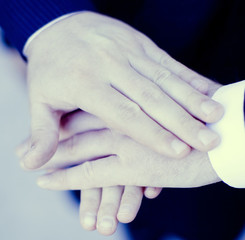
DrJA: We don’t. There’s no data, but I can give you a very personal example. Back in 2015, I think, my mother got terminal illness, got acute myeloid leukemia and died. As she was admitted to hospital, she had a chest infection, and they figured out that she had leukemia and it was a highly malignant type that wouldn’t respond to chemotherapy. So whilst she was still in hospital, we organized a supportive network. We got family and friends together so that when she went home, she could be cared for by the family who loved her.
Then this incredible thing happened, where people got together and just focused on my mother. It was transformative in so many different ways. You’re looking at her children, my brother and my sister, and the grandchildren and then her friends and thinking about who’s doing the shopping, cooking, cleaning. All of that kind of stuff, and everyone gathering together and gathering around.
And all of these things together actually are part and parcel of, it’s not just stuff going on in the community, it’s who surrounds us. And as a clinician, you can think about building supportive networks around people who are unwell. And in fact, I’ve got a website called compassionate-communitiesuk.co.uk, and I’ve got some blogs on there about quite a lot of the stuff that we’ve discussed. So, on the way that you build communities of support around people who are unwell… I’ve got a blog about network mapping, network enhancement, and then the use of a service directory.
And then I talk about compassionate community skills for clinicians. They’re just ways of things that clinicians can do to start putting this into their routine daily practice. I don’t know if that helps.
DrMR: It does. And I’ll ask our team to gather together a few of what seem to be the more relevant or impactful links and resources there, and then try to put them all in one area, so that people have the most direct access to those. But yeah, I think those resources are fantastic for people to have. I think this is something that we need to be thinking more about and taking steps to implement.
Case Studies: the Healing Power of Community
Do you have any case studies—or just things you’ve seen that really were eye-opening that you could share—that may help motivate any clinician who’s saying, “You know, I’m busy. I don’t know if it’s worth the bit of time it’ll take to set this up.” Anything you have to offer them to push them over the edge?
DrJA: Yeah, we’ve got loads of stuff. We ended up writing an article for a small magazine called Resurgence about the impact of compassionate communities. And this got picked up by a journalist who works for The Guardian. He wrote an article in The Guardian and we ended up getting a lot of international interest. In fact, we had people making documentaries, we had news companies, we had articles going on. You can go and look at some of those articles which include news items, interviews with patients who’ve been through it, and a whole variety of different things. And you can find that on the website of Compassionate Communities UK under media. You can find it under the website of Health Connections Mendip, which has links to the various news items, which are full of patient’s stories.
And you really get the sense of the impact of this stuff when you hear the patient’s stories. Just to give you a couple of examples, there’s a woman who you can see on one of the programs, who’s got severe chronic lung disease. She has 24-hour oxygen and she can’t get out. And she was suffering horribly from loneliness. You have to remember that social isolation is used as a torture in prison. So when you’re really limited like that, then if you’re stuck in your home and you don’t see anyone, it’s a horrific experience.
So, the Health Connection Mendip team went round, had a conversation with her, and arranged for somebody to come in and befriend her, to come in and see her on a regular basis. And she says it saves her life. You see from the emotion in the way that she speaks about it, what a difference it makes.
Another great story is a man who had a stroke. And he found that—being fit and active and then he has a stroke—he struggled to deal with that. When he came home from the hospital, he was bad-tempered and his wife stood it for about three months and then she left him. He had no idea what to do. He ended up going down to Men’s Shed, just as a way of finding something to do. You can see it when he’s interviewed, he says he’s down in the Men’s Shed in a regular basis. If he rings people up, they never say to him, “No, I’m too busy. I can’t see you.” They say, “Sure, come around to have a cup of coffee.” Then he says, “I never thought I would have friends like that again.”
This is so deep and profound, this stuff. And the stories are so moving. Anyone engaged in this kind of work, when they hear it and they see it, it really has a deep impact.
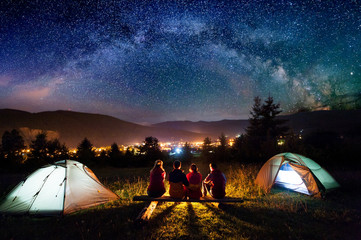
DrMR: Well, I think this might be a good challenge to the audience to pose as one of our closing notes here, which would be, call someone that you love or you care about, and make a plan to see them even if it’s not convenient for you. Something that I think is always worth repeating is, to have a friend you have to be a friend.
DrJA: That’s it.
DrMR: You can’t only engage in social activities when it’s convenient for you. And sometimes it is a pain in the butt. “I had to do this, I had to do the other thing, but instead I’m going to go see this person,” because it’s not always about when it’s convenient for you.
And so I would challenge our audience, before the week is out, to call someone and make a plan to do something that just involves spending time with them, even if it’s not convenient for you from a scheduling perspective.
DrJA: I think that’s exactly right. In a way, all of it drills down to the simple kindness we show each other as human beings. And even if you’re in a shop, smile at somebody and talk to them.
DrMR: Let me just second that one please, because one of the things that irks me is with every passing few years I notice people are more and more prone to keep their heads down, or just look straight ahead when they walk past you. I think devices are making us far worse.
So another thing I’ll just throw out there as an audience challenge: say hi to someone who you’re walking past, who isn’t looking at you and is probably just going to do the whole thing of, “I’m going to pretend no one is there and just walk straight.” Say hi to them and oftentimes you’ll see that people light up and they actually like to say hi to somebody else. It makes your world a little bit bigger, a little bit warmer.
DrJA: Yeah, for sure. I mean, I don’t think I’ve done it justice in a way, because it’s complex and a whole set of new ideas. But the hard essence of it is about how—on a really simple level—we treat each other as human beings. Really simple, just be kind to the people around you, you know?
DrMR: Yeah, I think that’s sage advice.
Episode Wrap-Up
You already provided us with your website. Will you provide that one more time, along with any other links or any other places you want to direct people?
DrJA: Compassionate-communitiesuk.co.uk. Health Connections Mendip. Frome Medical Practice. I think it’s really worth having a look at Julianne Holt-Lunstad’s paper on the impact of social relationships on mortality. And I think that’s probably plenty.
Obviously our paper, but you’ve already mentioned our paper because it’s the first one of its kind, and you can always look down the reference list there to see more academic sources.
DrMR: Perfect. And to your earlier comment, yes. This is a complicated topic but I think you did a good job of helping us understand how we can start to do something that’s not easy, which is to create a community. It’s not like we’re creating a picture frame. It’s not necessarily an easy thing. So I think you gave us some great places to start and we’re going to grab as many supporting resources as we can and link those in the transcript of this.
And Julian, I just really appreciate the work that you’re doing and taking the time to speak with us today.
DrJA: Well, thank you very much for inviting me and I’m delighted to talk about it. You have to stop me talking because I can go on for hours about it.
DrMR: Too bad we couldn’t do it in person in a coffee shop and get the community benefit.
DrJA: That would have been perfect!
DrMR: Well, thank you again, Julian. It’s been a real pleasure.
DrJA: Nice to talk to you. Cheers.
➕ Resources & Links
- Mama’s Last Hug: Animal Emotions and What They Tell Us About Ourselves
- The Village Effect: How Face-to-Face Contact Can Make Us Happier and Healthier
- The Compassionate Instinct: The Science of Human Goodness
- Health Connections Mendip
- Asset-Based Community Development
- Blue Zones: Los Angeles beach communities
- compassionate-communitiesuk.co.uk
- Network mapping and enhancement
- Service directory
- Compassionate community skills for clinicians
- Tackling loneliness and isolation reduces health bill
- The Guardian: The town that’s found a potent cure for illness – community
- Frome Medical Practice
- Social Relationships and Mortality Risk: A Meta-analytic Review
- Reducing emergency hospital admissions: a population health complex intervention of an enhanced model of primary care and compassionate communities
- Aerodiagnostics
- Dr. Ruscio Resources




Discussion
I care about answering your questions and sharing my knowledge with you. Leave a comment or connect with me on social media asking any health question you may have and I just might incorporate it into our next listener questions podcast episode just for you!